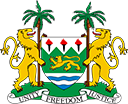WELCOME
KUSHE YA
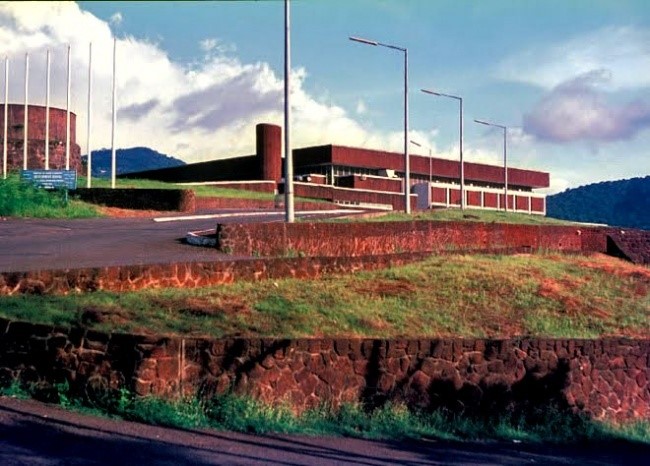
We welcome you all to our magnificent House of Parliament which is conspicuously situated at the summit of Tower Hill, Freetown, the capital city of Sierra Leone.
The oriental construction of Sierra Leone’s Parliament was done by the Israelis and was tuned to synchronize with Sierra Leone’s attainment of independence on 27th April, 1961. Indeed the fully air conditioned dome-shaped chamber, in which members seat numbering 146, is arranged in a horseshoe formation. It is unicameral.
The House of Parliament was ceremonially opened by His Royal Highness the Duke of Kent on the eve of Sierra Leone’s independence, 26th April, 1961.
Parliament of Sierra Leone is the legislative arm of Government responsible to make Laws, ratify treatises, policies, scrutinize budget and carry out oversight scrutiny for the wellbeing, of the people of Sierra Leone.
Members of Parliament comprise of directly and indirectly elected representatives, who meet to debate, amend and pass laws for the good governance of the country.
During the Fourth Parliamentary term the National Electoral Commission (NEC) in adherence to its constitutional mandate, delimited electoral constituency and ward boundaries, which is to be done “not less than five years and not more than seven years”, in complying with the timeline as stipulated in its Electoral Calendar (2015-2019), NEC in consultation with Statistics Sierra Leone undertook Constituency and Ward Boundary Delimitation and De-Amalgamation of Sierra Leone, It was approved in Parliament in 2017 as the newly constituted constituencies, ward and district demarcations used in the 7th & 27th March, 2018 presidential, parliamentary, mayoral and head-men elections.
This makes provision for 132 directly elected Members of Parliament and 14 indirectly elected paramount chiefs, which sum up to 146 Members of Parliament.
Each of the country’s fourteen districts is represented by Paramount chiefs from these 14 administrative districts whilst 132 members are directly elected concurrently with the presidential elections.
The administration of the Parliament of Sierra Leone is headed by the Clerk of Parliament, assisted by Deputy Clerks I & II and Heads of department that are responsible to provide technical and administrative support and advisory services to enable Members of Parliament effectively and efficiently execute their constitutional mandate (Parliamentary Service Act, 2007. Part II, Section 3).
Parliament has two buildings which are used by MPs and staff for parliamentary functions and activities. The main building has the Chamber; where the Speaker and Members of Parliament meet to transact the business of the House by deliberations, it also hosts offices for the Parliamentary Service Commission and Parliament’s Leadership.
The Administrative building has offices that are occupied by a variety of functionaries, including Chairmen, Deputy Chairmen of Committees, Consultants, Directors and Committee Clerks; it boasts a conference hall to host workshops, meetings and seminars.
The last Parliament was the Fourth and the current, the Fifth Parliament of the Second Republic of Sierra Leone. This means that it is the Fifth Parliament since the restoration of constitutional rule.
The first was in 1996, second, 2002, third, 2007, fourth, 2012 and the fifth, 2018. The change of parliaments is determined at every democratic election. The First Republic was in 1971, when Sierra Leone was officially declared a republic and the Second Republic was in 1996.
The Sierra Leone Parliament has a total number of 146 MPs, including the 132 elected through the first-past-the post electoral system and the 14 Paramount Chiefs, one from each of the fourteen districts, i.e. Karene and North West added to the previous 12 districts.
This is in compliance with section 74 (1) of the 1991 Constitution of Sierra Leone and in line with tradition inherited from colonial rule.
This constitutional provision states that each district in Sierra Leone shall have one Paramount Chief Representative elected through a separate election.
The parliamentary representation of the three parties in Parliament in the Third Parliament (2007-2012) is as follows: APC (59), SLPP (45) PMDC (10), Paramount Chiefs (12), with 16 women parliamentarians as against 108 male Members.
With the Fourth Parliament (2012 – 2017), only the two most prominent political parties succeeded in securing the people’s mandate, i.e. the SLPP (42) and APC (67) seats with a total of 15 women and 12 Paramount Chiefs.
The House of Parliament of Sierra Leone is a cubic citadel with a panoramic view of the Freetown harbor. Situated on the hilltop of Tower Hill, the complex has an assembly hall, members lounge, library, committee rooms, offices, cafeteria, and terraces. The building is an example of Brutalist architecture, a style that had its zenith from the 1950s to the mid-1970s, characterized by sharp geometrics and a rough concrete surface that reveals the imprint of the structure’s wooden frame. The coffee-colored parliament building is a symbol of the State of Israel’s long-running engagement in Africa.
In 1996 the late Dr. Karefa-Smart, one of Sierra Leone’s most prominent politicians and its first foreign minister, told Peter J. Kulagbanda, who was Principal Clerk of Committees at Sierra Leone’s House of Representatives, now the Director of Committees, that the idea of constructing a new parliament building was his (Dr. John Karefa Smart’s).
Once it became imminent for the British to relinquish its Crown Colony on April 27, 1961, Sierra Leoneans had less than a year to find a suitable venue for their legislative body and Independence Day Ceremony.
Dr. John Karefa-Smart approached the British with an idea to construct a parliament for the nascent government. It was their refusal—citing an unrealistic deadline—that led Sierra Leoneans to seek Israeli assistance.
Indeed, Parliament of Sierra Leone has unusual characteristics that deviate from the Brutalist style. The Parliament’s façade is covered in pre-cut pieces of red stone, locally excavated from the hilltop, which gives the building its coffee color. “The dome is also an enigma. It’s a strange feature that has nothing to do with Brutualist architecture, The entrance hall in Sierra Leone’s parliament is grand and spacious with high ceilings like an Italian palazzo.
The glass windows circling the main gallery send lances of sunlight over a staircase.
Do you intend to experience a memorable tour of the Parliament of Sierra Leone? If this is your first visit to the Legislative Arm of Government, be assured that this Guide will help you get the most of your trip.
Sierra Leone’s Parliament has a rich history, and you will discover several other aspects of interest when you get there. An officer from the Public Relations Office will walk you through the House of Parliament. But first, what does it take to access Parliament?
Section 73(1) of the 1991 Constitution of Sierra Leone establishes Parliament and states that “there shall be a legislature of Sierra Leone which shall be known as Parliament, and shall consist of the President, the Speaker and Members of Parliament”.
Admission to the House of Parliament is free. However, there are simple procedures to be followed as captured below:
- Apart from the President, Speaker, and Members of Parliament, other persons are regarded or referred to as “strangers”. Therefore the revised Standing Orders 79 (2006) of Parliament states “strangers shall be admitted to witness debates in the Chamber and Committee sittings under such rules as Mr. Speaker may make from time to time for that purpose, provided that where it is necessary the deliberations be held “in camera” Mr. Speaker or the Chairman shall put forthwith the question “that strangers do withdraw” without permitting any debate or amendment. Notwithstanding anything in this order, Mr. Speaker or the Chairman may, whenever he thinks fit, order the withdrawal of strangers from any part of the House.”
- One of the pre-requisites of your visit to Parliament is to ensure that you are decently dressed, and put your phones off or in silence during the course of parliamentary proceedings. You sit at the Gallery which is reserved for members of the public to observe the proceedings in Parliament without recourse to any action that may disrupt the business of the House.
- Please come along with a recognized identification such as National Identity Card, Voter’s Identity Card, or Passport and present it at the Police Post/Reception Desk. The Police/Receptionist will issue to you a visitor’s card before you gain access to the building.
- For the purpose of group visits, a written request should be sent to the office of the Clerk of Parliament prior to your visit, stating your intention, date, time, and number of intended visitors to the House.
- With due regard to the calendar of events taking place in the House, the Public Relations Office, and your group leader will agree on the appropriate date and time for your visit as will be stated in the response to your request.
There are two main routes to Parliament. The House can be reached from Model Junction at Circular Road, via SALWACO, Rokel Secondary School, 50/50 House on to the Parliament driveway. Alternatively, you may travel via the State Avenue through State House, Ministry of Defence, Vice president’s Office, NEC, NPPA, Office of National Security, which leads straight ahead to Parliament’s driveway and finally your destination which is strategically locate to oversee Freetown, Sierra Leone’s capital. The panoramic views below represent the entrance to the House.
You are expected to travel via the State Avenue at Tower Hill where State House is located, Ministry of Defence, Civil Service Training College, Vice President’s Office, National Electoral Commission, Political Parties Registration Commission, National Public Procurement Authority, Sierra Leone State Lottery, Audit Service Commission, Office of National Security, Ministry of Foreign Affairs and International Cooperation, Sierra Leone Investment, Export and Promotion Agency, and finally your destination-House of Parliament strategically located to oversee Freetown, Sierra Leone’s Capital. The panoramic views below represent the House and the route to Parliament.
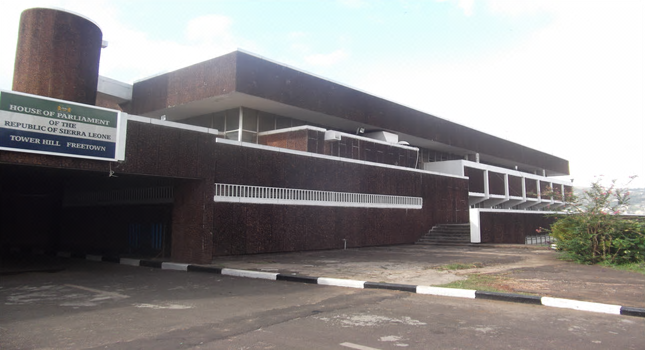
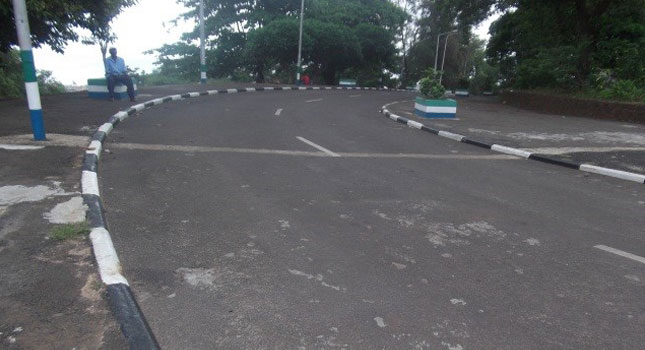
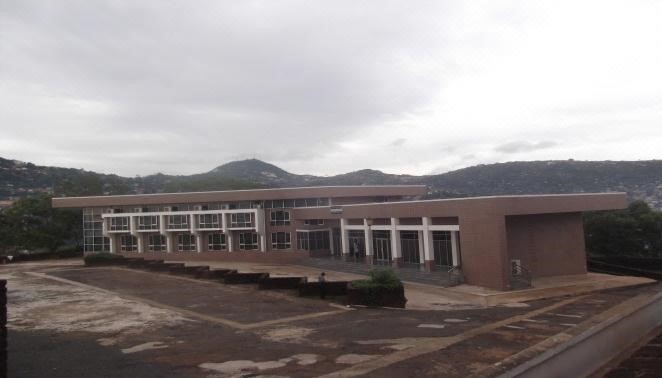
The Parliament Building, a monumental structure, was built by the Israelis; Its Chamber was opened by His Royal Highness, the Duke of Kent on the 26th April 1961, eve of Sierra Leone’s Independence. It is divided into four wings:
The West Wing: This wing houses the Chamber of Parliament, Members’ Lounge, Committee Rooms, and some political offices such as for the Minority Leader and Whips.
The South Wing: The significance of this area cannot be over-emphasized as it houses the offices of the Speaker and Deputy Speaker, Majority Leader, Clerk and Deputy Clerk of Parliament, advocacy resource centre and Westminster Foundation for Democracy office and at the back of the main building is the newly constructed Administrative Building done by the Chinese.
The North Wing: This wing houses the State Hall of Parliament, Pigeonholes, Library, and Canteen.
The East Wing: This is the main entrance to the House of Parliament. See below, the House of Parliament and its newly constructed Administrative Building.
The Chamber is the most pertinent room in the House of Parliament. It is where the Speaker and Members of Parliament meet to transact the business of the House during the plenary. The carpet in the Chamber would usually represent the colour of the ruling party. Notice the two corridors adjacent to the Chamber known as division lobbies.
The Speaker's Chair is black in colour, and exclusively reserved for the Speaker who presides over sittings in the House. At the back of the Speaker’s chair is a seat reserved for the President (who does not sit as a regular Parliamentarian, but occupies it to address the House once a year), beneath the Coat-of-Arms, is the President’s photograph, with the National Flag on both sides of the Speaker’s chair.
The Governing Party sits on the Speaker’s Right, whilst the Opposition Party sits on his Left.
Also note that Parliament is composed of 132 Ordinary Members of Parliament directly elected, and 14 Paramount Chiefs indirectly elected to represent the 14-Districts in the country.
The Mace: This is an ornamental staff crafted in brass, and symbolizes the power and authority of Parliament. It is laid at the centre of the table of Parliament. Below is a photograph of the Sergeant-at-Arms with the Mace, and he is also responsible for internal security in the House.
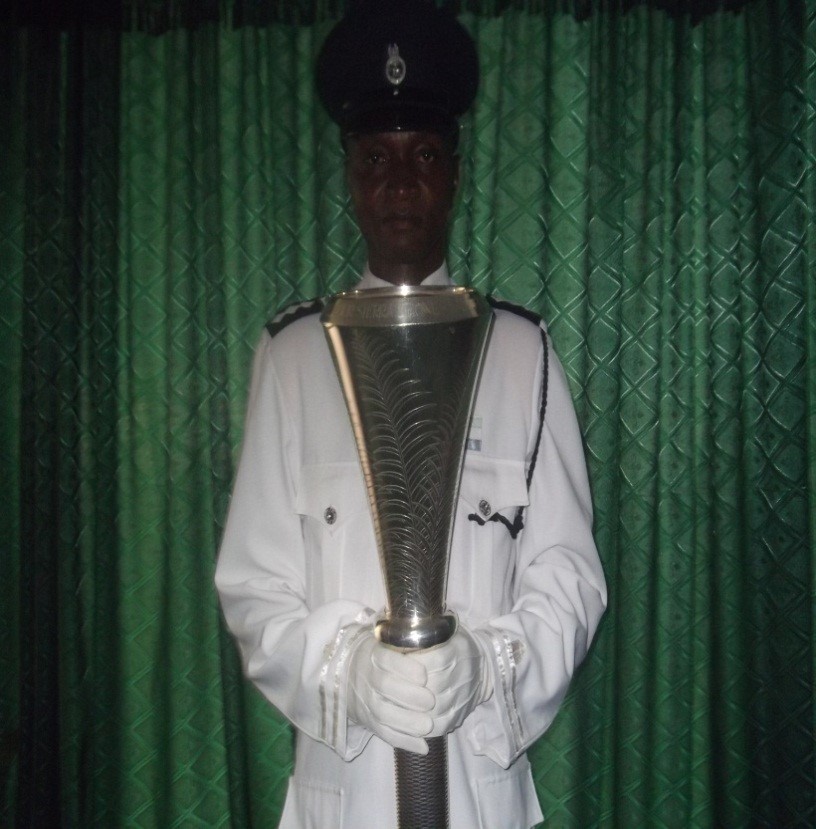
The Public Gallery: In this section of the Chamber, members of the public are allowed to sit and observe the proceedings of Parliament. It is partitioned into Lower and Upper Galleries with audio-visual facilities as shown in the picture below:

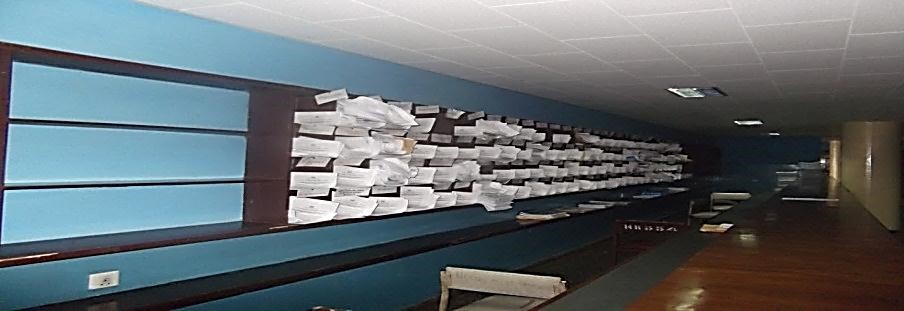
The Pigeonholes: the above picture represents the pigeonholes that are individually compartmentalized for proposed bills, letters and other documents which are to be delivered to Members of Parliament.
Members’ Lounge: this is an important area in the West Wing of Parliament exclusively reserved for Members of Parliament with DSTV facilities to keep up with events taking place around the world. The Speaker’s entourage (Sergeant-at-arms bearing the Mace, Speaker, Clerk of Parliament, Principal Table Clerk and Assistant) uses this route to enter and exit the Chamber. It has a wider space with over 100-seats where Members converge to discuss issues of importance. As shown in the picture below, it has on the wall photographs of past Speakers of Parliament.
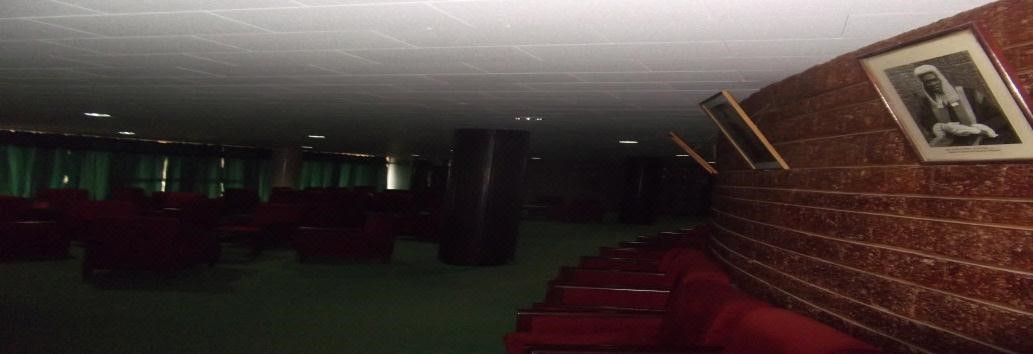
The State Hall of Parliament: It is a vast area in the North Wing of Parliament which serves as the main reception to the House. If it rains during State Opening, the President may inspect the Guard-of-Honour at the State Hall, where also the remains of entitled Sierra Leoneans are laid for public viewing before they are finally buried. Below is a photograph of the State Hall of Parliament.

The Grave Site: the grave site can be found in the East Wing of Parliament where the First Prime Minister and the Executive President of Sierra Leone, Sir Milton A.S Margai, and Dr. Siaka P. Stevens respectively where buried. Below are photographs of pupils of International Primary School on a visit to the House of Parliament.
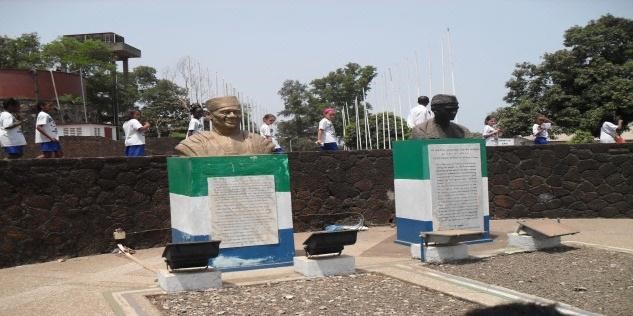
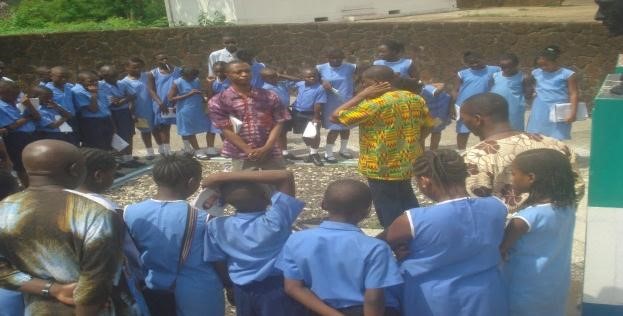
| Name | Period |
|---|---|
| Sir Henry Lightfoot Boston | 1957-1962 |
| Sir Banja Tejan-Sie | 1962-1967 |
| Sir Emile Fashole Luke | 1968-1972 |
| Justice Percy Davies | 1973-1976 |
| Justice Singer Betts | 1977-1981 |
| William N. Stephen Conteh | 1982-1992 |
| Military Junta | 1992-1996 |
| Justice Sheku M.F Kutubu | 1996-2000 |
| Justice Edmond K. Cowan | 2000-2007 |
| Justice Abel Nathaniel Bankole Stronge | 2007-2013 |
| Hon. Sheku Badara Basiru Dumbuya | 2013-2018 |
| Hon. Dr. Abass Chernor Bundu | 2018 - Present |
| Political Parties | Number of Seats Won |
|---|---|
| All People's Congress (APC) | 57 |
| Sierra Leone People's Party (SLPP) | 59 |
| Coalition for Change (C4C) | 8 |
| National Grand Coalition (NGC) | 4 |
| Independents | 3 |
| Paramount Chiefs(14-Districts) (PCMP) | 14 |
| Vacant | 1 Constituency 110 |
| Total | 146 |
| Women Representation | |
| All Peoples Congress | 7 |
| Sierra Leone Peoples Party | 5 |
| Coalition for Change | 1 |
| Independent | 1 |
| Paramount Chiefs | 2 |
| Total | 17 |
| Percentage | 11% |
| Political Parties | Number of Seats Won/Pending |
|---|---|
| All People's Congress | 70 |
| Sierra Leone People's Party | 42 |
| Paramount Chiefs(12-Districts) | 12 |
| Total | 124 |
What is Parliament?
Parliament is the supreme legislative organ of governance that comprises of directly and indirectly elected representatives who meet to debate, amend, and pass laws for the good governance of the country.
What is the life span of Parliament?
Section 85 of the 1991 Constitution of Sierra Leone states that “Parliament shall stand dissolved at the expiration of a period of five years commencing from the date of its first sitting after a general election”
Does the President have a seat in Parliament?
The President is a Member of Parliament and therefore has an exclusively reserved seat in Parliament. This is entrenched and clearly spelt out in section 73 sub-section 1 of the 1991 Constitution of Sierra Leone.
When is the President expected to address Parliament?
The President is by law expected to address Parliament once in a year with the State of the Nation’s Address at the beginning of a Parliamentary Session. In the event of any issue which warrants national importance, the President may request or be invited to address Parliament.
What is a bill?
A bill is a proposed legislation that has been presented to Parliament either by Government, or by a Member of Parliament through a Private Member’s Bill.
Who is the Clerk of Parliament?
The Clerk of Parliament is the Administrative Head of the Parliamentary Service and Secretary to the Parliamentary Service Commission, which is chaired by the Speaker. He is the Accounting Officer of the House, and the principal adviser to Mr. Speaker and the Leadership on matters of procedure in Parliament.
subscribe to ourNEWSLETTER
Sign up for newsletter to get the latest news, announcements and event information.

